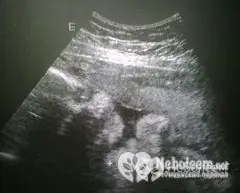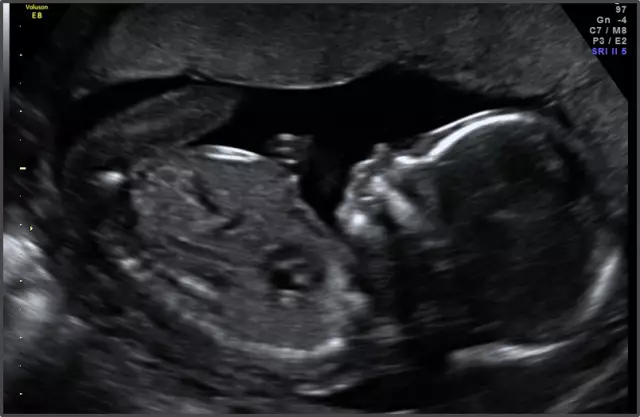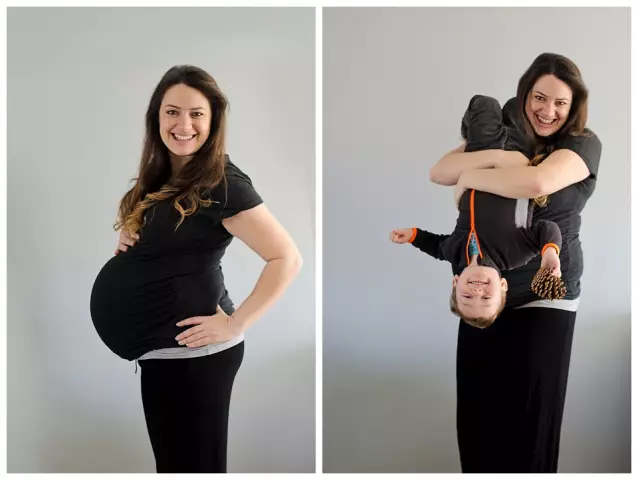- Author Rachel Wainwright [email protected].
- Public 2023-12-15 07:39.
- Last modified 2025-11-02 20:14.
31 weeks pregnant

It has already been 29 weeks since the conception of the future baby - this is his real age at 31 weeks of pregnancy. The fetus is already viable in case of premature birth, but the development and maturation of its organs is not yet complete.
Changes in the fetus
On an ultrasound scan at 31 weeks of gestation, you can see that the fetus has already reached a length of 40-41 cm and weighs about 1500 g.
The nerve connections in the brain are being improved, its mass at this time is about a quarter of the mass of an adult's brain. The organ of vision of the future baby is quite developed - he opens and closes his eyes, blinks, distinguishes between light and darkness, a protective corneal reflex has appeared. When the baby is awake, his eyes are constantly open, the muscles of the eyelids are already developed by the 31st week of pregnancy. The iris of the eye is formed, but the coloring pigment in it has not yet accumulated in the proper amount, therefore, in newborns, eyes are usually bluish-blue. Eye color will change after a while depending on the pigment formed under the influence of light rays.
The fingernails have grown noticeably by the 31st week of gestation and will soon reach the edge of the phalanges.
The fetal liver is developing at an intensive pace at the 31st week of pregnancy, it is already producing bile and is gradually beginning to take on the task of cleansing the child's blood from decay products and toxins. The pancreas can produce the hormone insulin, which is necessary for carbohydrate metabolism, but digestive enzymes are formed in it only after the birth of the unborn baby.
The fetus at 31 weeks gestation often takes its permanent position in the uterus - head down. If he is still with his legs down (with a breech or foot presentation), then it is not too late to do special exercises so that the fetus turns head down.
At 31 weeks of gestation, the fetus will be able to survive in case of premature birth, and it is highly likely that he will be able to breathe on his own, without the support of a ventilator, since the lungs already have a minimum sufficient amount of surfactant. A surfactant is a mixture of phospholipids produced by special cells in the lungs. It promotes expansion of the lungs during breathing and prevents them from collapsing. In boys, surfactant formation lags behind by 1-2 weeks compared to girls.
In utero, at the 31st week of pregnancy, the future baby performs training breathing movements, but they cannot be compared with the real ones - the fetal lungs do not straighten out when they are made, and the glottis is in a semi-closed state.
Changes in a woman's body at 31 weeks of gestation
The fundus of the uterus is determined 31 cm above the pubic joint and 10-11 cm above the navel. An increase in the size of the abdomen at the 31st week of pregnancy and, as a consequence, weight gain lead to the fact that the woman now quickly gets tired and tired, it is uncomfortable for her to make movements in the same rhythm. From this time on, the weekly weight gain of a pregnant woman should not exceed 300 g.
A growing belly at the 31st week of pregnancy puts more pressure on the stomach and intestines from the inside, which can increase:
- Heartburn;
- Constipation;
- Dyspnea;
- Nausea.

Pain in the 31st week of pregnancy bothers a woman in the lumbar and sacral spine. Their occurrence is facilitated by both the displacement of the center of gravity of the body, and the softening of the periarticular ligaments under the influence of pregnancy hormones.
Now the uterus periodically tenses and relaxes - this is how training contractions manifest themselves. Her muscles are gradually preparing for labor.
Quite often, pain in the legs at 31 weeks of gestation is combined with their edema. Due to the compression of the venous vessels by the uterus, some swelling of the legs by the end of the day occurs normally, but if it does not go away by the morning, this is a reason to see a doctor.
White cheesy discharge at 31 weeks of gestation is a sign of vaginal candidiasis. Thrush is often exacerbated by a decrease in immunity, including during pregnancy. This process cannot be left without treatment, because it not only gives a woman unpleasant sensations, but can also infect the fetus. It is not possible to deal with candidal discharge at 31 weeks of gestation by all means, since some medications negatively affect the unborn child.
Examination at 31 weeks of gestation
The third screening ultrasound at 31 weeks of pregnancy is performed if it was not done a week earlier. Ultrasound helps to control the conformity of the size of the fetus to its term, the degree of maturation of the placenta and the place of its attachment, the structural features of the internal organs of the fetus. At this time, you can detect some defects of the heart, kidneys and intestines, as well as determine the tactics of the upcoming delivery.
YouTube video related to the article:
Found a mistake in the text? Select it and press Ctrl + Enter.






